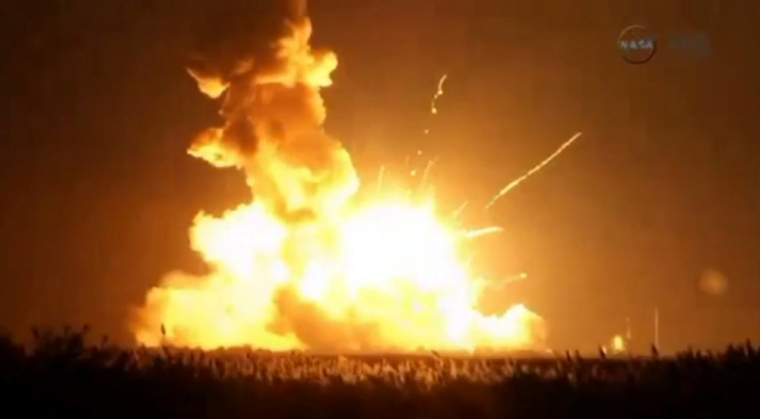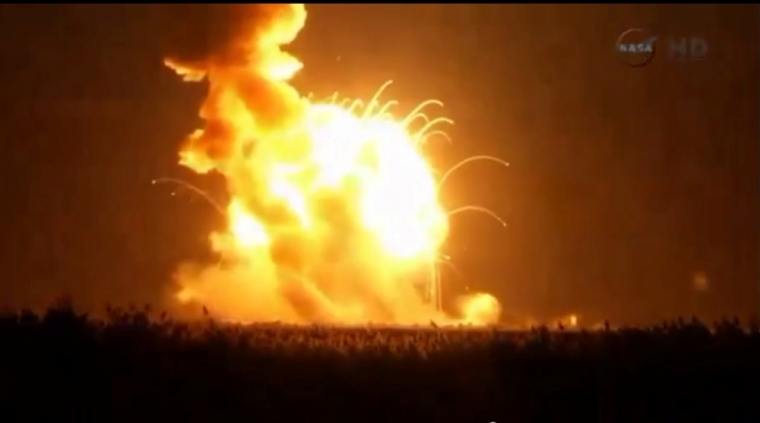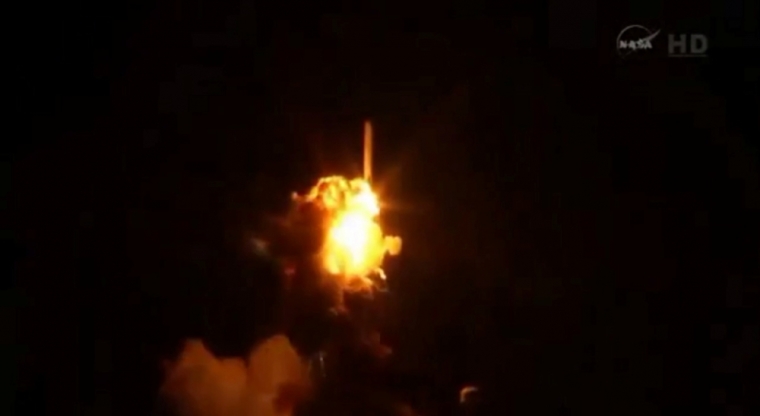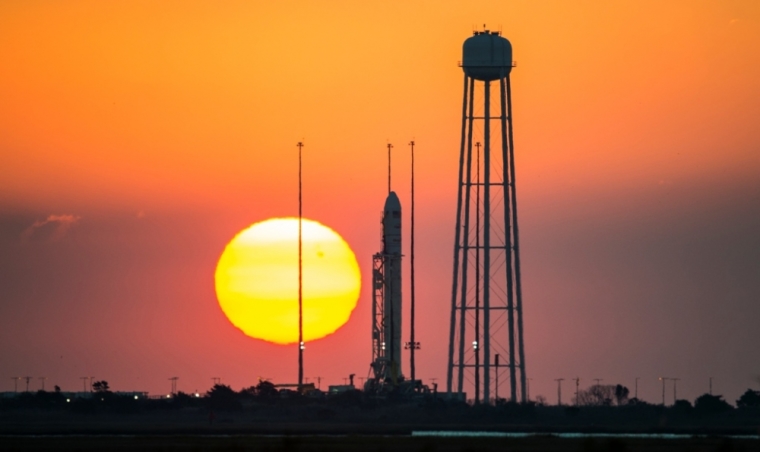NASA-Contracted Orbital Sciences Rocket Explodes in 'Catastrophic Failure' During Launch in Eastern Virginia
Just six seconds after liftoff, a NASA-contracted unmanned Orbital Sciences Corporation rocket stacked with 5,000 pounds of food and scientific experiments exploded in a fiery ball in Virginia Tuesday evening. The rocket was destined for the International Space Station orbiting 200 miles above earth.
Orbital Sciences Corporation, which is one of the world's leading space technology companies, confirmed in a press statement that the explosion occurred at about 6:22 p.m. Tuesday evening at NASA's Wallops Flight Facility. The rocket "suffered a catastrophic failure" and is being investigated.
"According to NASA's emergency operations officials, there were no casualties and property damage was limited to the south end of Wallops Island. Orbital has formed an anomaly investigation board, which will work in close coordination with all appropriate government agencies, to determine the cause of today's mishap," said the statement.
Frank Culbertson, Orbital's executive vice president and general manager of its advanced programs group, said the company expects to return to flying as soon as they know what caused the explosion.
"It is far too early to know the details of what happened," he noted in the statement.
"As we begin to gather information, our primary concern lies with the ongoing safety and security of those involved in our response and recovery operations. We will conduct a thorough investigation immediately to determine the cause of this failure and what steps can be taken to avoid a repeat of this incident. As soon as we understand the cause we will begin the necessary work to return to flight to support our customers and the nation's space program."
A CNN report said about a third of the cargo that was on the rocket were scientific experiments, such as a Houston school's work on pea growth and a study of how blood flows in space. There was also 1,300 pounds of food and other basic supplies for the International Space Station's six-member crew.
NASA has relied on private companies like Orbital to restock supplies and move cargo between earth and space since it ended its space shuttle program. Orbital has a $1.9 billion contract with NASA to carry out eight such missions for NASA. This was the company's third mission. The first launch was from the Wallops facility in January.
William Gerstenmaier, associate administrator of NASA's human exploration and operations directorate, has expressed confidence in Orbital despite the expensive mishap. Culbertson told CNN that the destroyed rocket and spacecraft cost more than $200 million. There was also other damage beyond that which includes the launchpad.
"While NASA is disappointed that Orbital Sciences' third contracted resupply mission to the International Space Station was not successful today, we will continue to move forward toward the next attempt once we fully understand today's mishap. The crew of the International Space Station is in no danger of running out of food or other critical supplies," said Gerstenmaier.
"Orbital has demonstrated extraordinary capabilities in its first two missions to the station earlier this year, and we know they can replicate that success. Launching rockets is an incredibly difficult undertaking, and we learn from each success and each setback. Today's launch attempt will not deter us from our work to expand our already successful capability to launch cargo from American shores to the International Space Station," the statement ended.


























